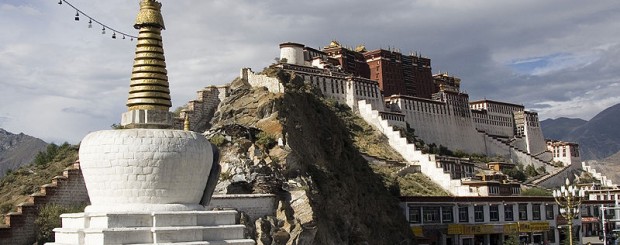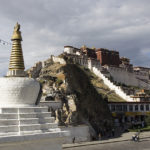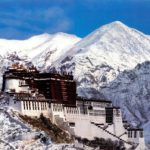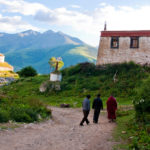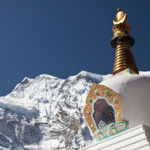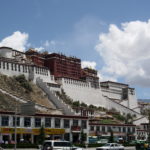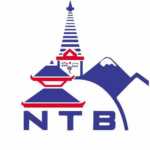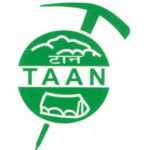Tibet Travel Guide: Complete Information Before Traveling
-
General Information
Tibet – Shangri-La, the land of snows, the roof of the world. The very name evokes feelings of awe and mystery. A land of ancient Buddhist culture, awesome landscape, and artistic monasteries and centuries old caravan trails. Tibet is a destination out of ordinary. Famed as the roof of the world, the Tibet Autonomous Region of China lies on a plateau at an average elevation of 4000m. It is bounded by the Kunlun Mountains to the north and the Himalaya to the south. Tibet covers an area of 1228400 sq. km and has a population of 3.03 million.
Tibet is a sacred land of myth and mysteries inhabited by the ever smiling people. Has not only exerted magnetic spell upon travellers for centuries. But also spies, missionaries, scholars, geographers, mystics, soldiers and crank etc. yet, few intrepid serious and determined have been able to make it. Tibet being extremely remote and isolated by the most formidable Himalayan ranges, a fascinating world of timeless splendor, unique tradition, and breathtaking scenery awaits all travelers to the roof of the world.
Getting into Tibet
Our tours and treks are based on entry and exit from Kathmandu. However, you can also enter from parts of Mainland China, i.e. Beijing, Chengdu etc. Air China flies between Kathmandu and Lhasa across the mighty Himalayas. This flight offers spectacular views of Mt. Everest, Makalu and many other Himalayan giants. All our trips, which begin by flying into Lhasa, can be joined from Kathmandu, Beijing, Hong Kong, Chengdu or Bangkok (via Chengdu). In the cities above you will be met at the airport and transferred to your hotel. You will then have the chance to see the sights before being transferred to the airport the next day for your flight to Lhasa. Additional accommodation in Kathmandu, Beijing, Hong Kong, Bangkok or Chengdu can be arranged, please ask us for more detail.
Geography
Tibet lies at the center of Asia, with an area of 1228400 million square Kilometers
-
Capital: Lhasa
-
Population: 3.03 million (2011) National Bureau of Statistics of China
-
Language: Tibetan (of the Tibeto-Burmese language family) the official language is Chinese.
-
Political & Religious leader: The 14th Dalai Lama. In exile in Dharamsala, India
-
Climate: Tibet is cold in winter and cools in summer and generally dry; receiving only 45 cm (18 inches) rain or snow annually. Temperature can vary greatly with in a day, however, passing 29 degrees C (85 degrees F) in desert areas in summer, and plunging below 4 degrees C (40 degrees F) at night. The higher you go the colder it gets, of course. Sunlight is extremely intense. Winds in winter are ferocious. Rainfall in southern Tibet occurs intermittently between June and September, brining moister to barely fields and greenery to the valleys. The pleasant months for travel are April to October.
Transportation in Tibet
The roads in Tibet can at times become quite rough and impassable for many vehicles, It can at times become quite rough and impassable for many vehicles, so for this reason we use best Land cruiser 4WDs (Toyota 4500). These vehicles are extremely reliable and will make the journey as comfortable as possible. As for the trekking and climbing there will be a truck for carrying luggage and trek equipment. We’ll drive for several hours, stopping along the way for photographs or places of special interest, before stopping for lunch at around midday. After lunch we continue our journey, generally arriving at our destination by 3 or 4pm.
Best Time to Visit Tibet
Despite the high altitude of the Tibetan Plateau, the daytime temperatures are actually quite mild. Between April and November the average temperature ranges form 15-25 degrees Celsius and the skies are generally clear and blue. From July to August though there can be the odd shower during the day. The nights, however, can be very cold and temperatures can drop below 0 degrees Celsius. During the day a light shirt or jumper and lightweight pants will be suitable, but a warm fleece or down jacket is recommended for the evenings.
Altitude and Health
No special inoculation is required but because of Tibet’s high altitude travellers with a pre-existing problem of heart, lungs or anemia should consult a doctor before even thinking about a visit. Most other travellers, once they are acclimatized, rarely suffer more than mild discomfort from the altitude. Our Advice: Drink 4 liters of water minimum a day. Don’t exhaust yourself so much and breathe deep and take rest more than usual.
Other health problem
Of course the cold weather makes it very likely that you get a cold and a cough. Take care to get enough vitamins. There is the same stomach bug names giardia that is also found in Nepal. Take enough anti giardia drugs like Falgyl or Tiniba with you as they are hard to find in Tibet. Don’t drink tap water. Even in the smallest guest house in the remotest villages there are thermos bottles with boiled water. It is used to drink tea. There are many dogs in the streets and near the monasteries. There are reports of foreigners being bitten.
Visa and Passport
Passport
A traveler should bear with him a passport with validity remaining no less than six months. Make sure that it has plenty of blank pages for visas, entry and reentry stamps and extensions. Besides, holding other ID’s like student card or driving license will be an advantage. Loosing passport in Tibet is very bad, as you have to go to Beijing to get new one.
Arriving Lhasa via mainland China
If you are planning to arrive in Lhasa via mainland China, you would need to apply for your Chinese visa from the Chinese Embassy in your country.
Once you have the Chinese visa, you will need to scan the visa and email it to us along with the copy of your passport. Both the documents should be clear and readable otherwise it will be rejected by the Tibet Travel Bureau in Tibet (TTB).
Please note that you would not be eligible for the Tibet travelling permit without the Chinese visa. On the basis of the copies of the Chinese visa and passport, we will apply for your Tibet entry permit from the TTB. With the combination of the Tibet permit and Chinese visa you would be allowed to enter Tibet from the mainland China. Once your Tibet permit is issued, you can collect it from anywhere in mainland China where you are supposed to arrive or have it delivered at your hotel you would be staying while in mainland China at an extra charge of USD 30 for courier.
Arriving Tibet
Via Kathmandu or go overland via Zhangmu or Simikot border
On the other hand, if you are planning to fly to Lhasa via Kathmandu or go overland via Zhangmu or Simikot border, you would need to arrive in Kathmandu at least 2 to 6 days (if you want to apply for the minimum visa – normal charge) before your entry into Tibet.
Chinese Embassy in Kathmandu issues visas only on Mondays, Wednesdays & Fridays from 0900 hrs to 1100 hrs.
Travelers are thus required to arrive in Kathmandu a day prior to the visa issuing days to enable us to get Chinese/Tibet visa for them. In order to get the Tibet visa, we would need to show your original passport at the Chinese Embassy in Kathmandu. As such, our operating officer who would be at the airport to receive and transfer you to your respective hotel would collect the passport from you and get the visa.
Have a look at the chart provided below for your reference for the costs on Tibet visa:
Normal (5 days)
Top Urgent (same day)
American Passport Holder
USD 164
USD 198
Other Nationality
USD 80
USD 114
SPECIAL NOTE TO CONSIDER
Do not apply for the Chinese visa in your country if you are intending to travel to Tibet via Kathmandu (Nepal). If you had applied for the Chinese visa in your country prior to arrival in Kathmandu, it would be automatically cancelled when we get the Tibet visa for you here in Kathmandu.
The Chinese/Tibet visa you get in Kathmandu is a “group visa” and is not entered in travelers’ passports but on a separate sheet of paper – be it one person or a group consisting of two or more persons.
Acclimatization
Tibet is the highest plateau in the world and is widely known as ‘The Roof of the World’. We will be driving in high altitudes that go constantly above 5000m/16400ft during the journey. Driving fast in such an elevation could cause medical conditions (Acute Mountain Sickness) which could be fatal. There is 50% less oxygen compared to sea level in high altitudes like Tibet. The higher the altitude, the less oxygen there is in the air. Our body needs a few days to acclimatize to this less-oxygen environment. Although Himalayan Glacier has been providing sufficient information regarding precautions against AMS, it should be understood that if one does get affected by AMS, proper medical care is the only way to treat it.
It is important to make sensible plans in order to avoid AMS during the tour. Therefore, Himalayan Glacier would advise guest(s) to do some trekking or altitude activities in Nepal or elsewhere before taking this trip. We would also advise our guest(s), especially one(s) with known heart or lung or blood diseases to consult their doctor before traveling. Mild headaches, fever, loss of appetite or stomach disorders are all symptoms of AMS.
Pre Departure Meeting
We will have a pre-trip meeting at Himalayan Glacier’s office in Kathmandu at least 2 days prior to the tour departure date. On this meeting you are expected to handover your original passport and fill out form(s) for the Chinese Visa. There will also be a final trip briefing meeting a day before the trip at 5:00 pm to share some tour insights in order to better prepare you for your trip.
This tour does not include your stay in Kathmandu but if you wish for Himalayan Glacier to arrange you the accommodation of your choice, airport pick up or your tour to some of the most exotic places in Nepal for any kind of adventure activities of your choice, Himalayan Glacier can also arrange you a tour package upon request.
Custom Formalities
Upon entering China all foreigners are required to register any list of things in their possession. These must be accounted for on leaving. Art objects and antiques in Tibet fall under special restrictions forbidding their export. Rugs may be bought and exported, so may the small religious objects that are sold in open markets, providing only one or two are taken as souvenirs. Customs officials have been known to confiscate jewelry or other objects if they consider that a tourist has purchased “too much”
Clothing & Equipment
- Down jacket or warm fleece top
- Thermal underwear (top and bottom)
- Cotton shirts (short and long sleeved)
- Warm and cotton trousers
- Sun polarized sunglasses
- Beanie or warm woollen hat and gloves
- Scarf (to keep out dust as well as cold)
- Sandals (flip-flops)
- Towel
- Sleeping bag (for camping/trekking)
- Rain jacket
- Strong sun cream and lip protector
- Moisturizer
- Water bottle
- Camera (and plenty of film and spare batteries)
Guide & Accommodation
Throughout your time in Tibet you will be accompanied by a knowledgeable Tibetan guide who will not only act as an interpreter but will also provide a valuable insight into the Tibetan way of life. In Lhasa, accommodation will be at Dhood Gu or similar standard hotel. It is renowned for its hospitality and warm Tibetan atmosphere and is perfectly situated in the center of town just a few minutes’ walk from the Jokhang Temple and Barkor. Elsewhere along the route, accommodation will be in the best available hotels. Meals will either be in the hotel or at a restaurant of your choice (where available). Whilst on the road, lunch will be at one of the many Chinese tea shops along the way which generally serve a variety of noodle and vegetable dishes and meat where available.
Challenges
It is quite challenging to plan a Tibet Travel. There are several factors that makes it tough and only experienced one can organize it in an efficient way based on their past experience. Here are our Top challenges:
-
Tibet – Tibet travel is the most important factor that makes it difficult to organize. Tibet Travel Permit is difficult to get, and moreover, rules and regulation keeps changing from Tibetan Authority. Tibetan government provides special Tibet Permit. Therefore, awareness of specific rules and regulation is utmost necessary, so that Yatris do not get stranded at the Tibet Border.
-
Facilities: Tibet is a remote area which lacks good services. Please go through these guidelines to learn more about Tibet.
-
Natural Calamities – Natural disaster can happen at anytime, most importantly, bad weather. This mostly affects Helicopter flights, and may have to cancel flights. Moreover, we can any changes of itinerary for your safety.
-
High Altitude & Trekking – We need to be aware that we are travelling in a high altitude and moreover, trekking will be challenging.
If one is aware of above risk factors, and can get guidance, then you can prevent or overcome any difficulties that may happen during the travel. From our past 15 years of experience, we have learned a lot regarding travelling to Tibet. We believe that one need to aware of several factors before travelling to Tibet, so that you can make best decision for yourself and make it a most memorable Tour of your life. Therefore, we are making these complete guidelines to share with you and give awareness of what to expect before making a big decision.
We hope that you will find this guideline document helpful. Please do email or call us if your questions are not answered in our guidelines.
Hotel Information
We will provide Guest House at all places in Tibet side. All Guest House will be based on sharing with Common Bath. Most of the places in Tibet are Guest House accommodation with basic facilities only.
Payment Information
Visit https://www.kailashjourneys.com/payment/
Booking Requirements
- Fill out Booking form (Click Here) and email it to us at tibettour@KailashJourneys.com
- Scanned passport copies
- Advance payment of USD 300 per person.
Health / Fitness / Medical Fitness Certificate
You must be physically fit for Tibet travel. We do not need any medical certificate.. However, it is better for everyone to take an advice from your family doctor for traveling in high altitude. Nowadays, there are hospitals available at Tibet if in case of emergency. We will provide oxygen cylinder or oxygen bottle in case of emergency.
Trip Insurance
Personal travel insurance is not included in the trip price. It is a condition of booking a trip with Kailash Journeys (P) Ltd., and your own responsibility to ensure that you are adequately insured for the full duration of the trip in respect of illness, injury, emergency coverage, death, loss of baggage and personal items and cancellation and curtailment. Kailash Journeys (P) Ltd. does not arrange any insurance. Please consult your local insurance company. Many health insurance companies does not cover while traveling to high altitude. So make sure you are covered above 4500 meters altitude, since Kailash Mountain base is higher than that. Nowadays, there are hospitals available at Tibet if in case of emergency.
Tibet Travel Permit and Chinese Visa Process
Chinese Visa / Tibet Permit
- The Chinese visa is a group Visa paper based.
- First of all we need your Color passport copies by email to apply for Tibet Travel Permit (required by Chinese government).
- We will get Tibet permit around 15 days before your departure date. After that we need your original passport at Kathmandu once you arrive for Group Visa processing:
- After you get group Chinese Visa, we will give your passport back to you next day of your arrival.
- Therefore, since it takes time, we suggest our Yatris to book as early as possible, so that your yatra can be begin in your desired departure date.
Visa / Passport Requirements Chart
Visa Type
Requirements
Nepali Visa
Visit Immigration Nepal
Visa is given upon arrival at Kathmandu Airport.
Chinese Visa / Tibet Permit
Color Passport Copies is required Chinese Visa after KTM Arrival
Passport Information – When and Where?
We will process to arrange visa for which we require the following details:
- Full name
- Sex
- Date of Birth
- Profession
- Nationality
- Passport Number
- Validity of the passport should be at least six months
- Passport size photographs
We have many inquiries regarding the Passport, Chinese Visa, & Tibet Permit. Therefore, we want to make it clear that it is our responsibility and you do not need to worry about. Here is the workflow of how we handle:
Step 1: For a Group Tour, we will apply for Tibet Permit for which we will use your Color passport copies that you have sent us. Please note that Tibet Authority does not gives us fixed date to approve the Permit.
Step 2: As soon as we get the Tibet Travel Permit approved, we will let you know.
Step 3: We will apply for Chinese Visa when you arrive in Kathmandu, Nepal.I already have Chinese Visa stamped in my passport, do I need Visa again?
If you plan to enter Tibet from Nepal, you must get your Tibet group visa from the Chinese embassy in Kathmandu. Whether you already have a Chinese visa or not, a Tibet group visa is compulsory for all tourists entering Tibet from Nepal.
Cancellation Policy
It is our most important aim that you enjoy your holiday and that we earn your trust. However, we are not responsible for any cancellation due to any industrial disputes, Technical failure of any type of transport we use, loss of earnings, late arrivals or force majeure, or any items beyond our control.
- After booking, if you wish to cancel your trip, you must notify Kailash Journeys (P) Ltd. in writing. Once Kailash Journeys (P) Ltd. receives your notice, cancellation will take effect subject to the following:
- If cancellation takes place in between 90 – 150 days prior to your departure date, your full payment will be refund except the non-refundable deposit:
- If cancellation takes place in between 30-90 days prior to departure 75% of your payment will be refund except the non-refundable deposit.
- If cancellation takes place less than 30 days prior to departure due to client’s personal problems, all previously paid amount(s) will be forfeited.
Preparation before Arrival to Kathmandu, Nepal
Money in Kathmandu & Tibet / Personal Expenses
Personal Expenses in Tibet
- We will exchange the amount to Yuan (Chinese Currency) for you upon your arrival. You must let us know upon Kathmandu arrival on the first day so that we can proceed immediately.
- It is suggested to carry minimum CNY (Chinese Yuan) 3,000 extra money for any emergency.
- In Tibet only CNY (Chinese Yuan) is acceptable. You may easily exchange USD or INR to CNY in Kathmandu OR in Kodari (Nepal-Tibet Border).
- Most of the yatri exchange their money in Nepal-Tibet border.
- Any unused CNY may be re-exchanged in Kodari or in Kathmandu.
Current Exchange Rate
- 1 USD = 6 Yuan (Chinese Currency)
Mobile Phone in Tibet
Nepali SIM card doesn’t work at Tibet side but there will be shops at the phone center on the way to Tibet Tour. You can take your mobile with you and buy a SIM card there to call your family and relatives.
Highest Altitude during Tibet Travel
Lhasa is the altitude of 3,658 meters (12,000 ft).The lowest point will be Kathmandu. Reting Monastery is the altitude of 13350 feet Ganden Monastery of 3,800 meters (12,467 feet), Zhangmu>> 2300 m. (7,546ft.), Nyalam 3,750 metres (12,300 ft)
Distances
Distance from Lhasa to different location
- Lhasa to Airpot: 100km
- Airpot to Tsetang: 100km
- Lhasa to Dangxiong: 160km
- Lhasa to Tsetang: 200km
- Lhasa to Gyangtse: 200km
- Lhasa to Gyangtse to Shigatse: 360km
- Lhasa to Shigatse by river: 280km
- Lhasa to Sakya monastery by riverside: 430km
- Lhasa to Tsupu monastery: 65km
- Lhasa to Ganden mosastery: 55km
- Lhasa to Namtso lake: 240km
- Lhasa to Yangdrok lake: 110km
Distance from Shigatse to different location
- Shigatse to Sakya monastery: 175km
- Shigatse to Mt.Everest: 350km
- Shigatse to Gyangtse: 100km
Travel to Tibet by Driving – Overland adventure to Tibet
Five roots for getting Lhasa
For the adventurous, driving a 4 wheel-drive vehicle to Tibet provides an incredible experience that you will never forget for the rest of your life. It is a difficult route, not for the faint of heart! On the other hand, with the fast road construction these years, the road condition is better and better year by year, it is also workable for well remained tour vehicle of van or bus for this sort of trip, your group will not be split to travel separately by many small cars but you can travel together as one group, it costs less expensive.
You can drive to Tibet via 5 routes:
- Sichuan (Chengdu) to Lhasa: 2159 kilometers to 2407 km
- Yunnan (Kunming) to Lhasa: 2317 kilometers
- Qinghai (Xining) to Lhasa: 1947 kilometers, Qinghai Tibet Highway
- Xinjiang (Yecheng) to Lhasa: 2743 kilometers
- Kathmandu to Lhasa
The Qinghai and Kathmandu (“friendship highway”) routes are the most accessible. We do not recommend any of the other routes unless you are a ‘professional driver’, equipped with all the necessary gear and backup support.
Souvenirs from Tibet
Normally during our trip we will meet lot of ladies selling necklace, yak bone items, crystal mala, precious stone items, apart from Buddhist worship items.
-
FAQS
1. General Information
Q. When is the best time to go to Tibet?
It is recommended that one visits the region around May to July, and September to October. Lhasa, Tsetang and Shigatse are suitable for sightseeing tours all-year round. The harsh climate makes it unsuitable to visit the Everest Base Camp area from October to April. During winter, roads might be blocked by heavy snow in east Tibet and Ngari. While in August, heavy rainfall makes visit in those areas very difficult.
Q. What should I bring when visiting Tibet?
Besides the detailed information given on what to pack we suggest you bring some fresh fruit for your consumption as upon arrival, you might lose your appetite and this might be the only food you would like to eat.
Q. Can you tell me how frequent are your tours in Tibet?
You may start anytime at your convenience if you choose our private tours as long as the flight schedule matches your plan. Please contact us if you want to join our group tours.
Q. What is the best way to visit Tibet? Join a pre-packaged tour or do-it-yourself?
Independent travel is prohibited in that region. You have to join an organized group or have a private tour arranged by a tour agency.
Q. What currencies can be used in Tibet? Can I use credit card and ATM cards?
Besides Chinese Yuan, only US dollars can be accepted. Also shops that accept American currency are very limited and you might not be able to get a good deal for an exchange rate. Credit cards can only be used at some hotels. The Bank of China also accepts credit cards. ATM is not widely available. Exchanging your money to Chinese currency will be the best option for you, which can be done at the Bank of China.
2. Enter Tibet from Other Countries
Q. Can I fly into Lhasa from Kathmandu?
Yes, you can. However, the flight flying between Kathmandu and Lhasa is not available daily. Also, you need to consider the following information before you opt to fly from Kathmandu.
- You need to secure a Travel Confirmation Letter and a Tibet Travel Permit from a reliable Chinese tour agency that arranges Tibet tours.
- You need a reliable agency in Kathmandu who will apply for a China Visa for you.
- The Consular Section of Chinese Embassy in Kathmandu is only open for visa application in the morning of every Monday, Wednesday and Friday, except holidays. You are advised to arrive 3 days before your departure to Tibet.
- If you have been issued a China Visa prior to your arrival in Kathmandu, the visa will be cancelled and will be replaced with a visa granted by the Consular Section of the Chinese Embassy in Kathmandu. This will be a paper-visa instead of a visa attached to a page on your passport.
NOTE: if the people in your group will leave China separately, it will be a better option to apply for an individual visa rather than a group visa.
Q. How do I get to Lhasa from Bangkok or other international cities?
At present there is no flight operating between foreign cities and Lhasa other than Kathmandu. People cannot go to Lhasa from Bangkok. They will need to go to a certain city in mainland China, like Chengdu, Beijing and Guangzhou or go to Kathmandu to take a flight to Lhasa.
3. Safety and Mountain Sickness
Q. Is it safe to travel in winter time, especially from Tibet to Kathmandu (my port of exit)?
The Chinese-Nepal Highway is often blocked by heavy snow during winter. Therefore, it is not safe to go along this route.
Q. Is it advisable for me to bring a sleeping bag because the sheets/blankets in the hotels may not be clean?
In 3- or 4-star hotels in cities and towns like Lhasa, Tsetang, Shigatse and Gyangtse, you do not need to worry about sanitation. Though, it is a fact that the visit to Tibet is a bit hard. But if you are going to remote areas like the Everest, it is best to bring a sleeping bag to ensure that you have a nice sleep en route.
Q. Are the streets in Tibet safe?
Generally, it is quiet safe. Almost all Tibetans are devout Buddhists who believe good deeds will accumulate merit in their next lives; crimes are rare. But visitors need pay attention to dogs that are free to move everywhere.
Q. What medicines should I bring?
We suggest that you take some pain-killer pills with you and enough medicine for colds, diarrhea, nausea and fever. Some nasal ointment and throat-moistening pills will greatly be of help for those who are sensitive to chilly or freezing weather conditions. Please consult your doctor prior to your journey.
Q. I have a cold, but my visit to Lhasa starts tomorrow. Can I join it as scheduled?
We suggest that you postpone your visit and not take such a risk. People with respiratory problems will have great difficulties to recover from cold. The chilly weather might cause pulmonary edema or even death. People who are suffering from colds, heart/cardiac illnesses, severe respiratory problems, hypertension, liver or kidney problems, anemia and other serious health problems are advised not to visit Tibetan plateaus. Visitors suffering from such illness might have a hard time to adapt to the environment which might cause the worsening of their illness.
Q. What could I do to avoid mountain sickness?
Some visitors will get mountain sickness when on the Tibetan plateau. We have some tips for you:
Before you go
Seek advice from people who have similar experiences. The most important thing is that you should never be nervous or worried about your trip. Regard the visit to Tibet like a visit to any other cities. You should always be optimistic.
If you have respiratory problems, we advise you to postpone your visit till you are fully recovered.
A thorough physical examination is necessary. If you have problems like anemia or hypertension, or suffer from heart problems and other illness of lungs, liver or kidney, you should not go there.
You need to bring enough water or drinks and fruits. Snacks with high caloric content, like chocolate, will come in handy.
Since we are traveling with kids (around 2-3 years old and we have been hearing a lot about the high altitude adjustment problems for visitors to Lhasa, do you think we would have any difficulty?
Age has nothing to do with the occurrence of mountain sickness. Anxiety is the common cause of mountain sickness. You may click the link to have more information on avoiding mountain sickness. Always remember that if you have any problems or feel uncomfortable, you need to tell the guide about this immediately.
About some famous places
The Drepung Monastery is Situated at the foot of the Mountain Gambo Utse, 5 kilometers (3.1 miles) from the western suburb of Lhasa, the Drepung Monastery is known as the most important monastery of Gelugpa in Tibetan Buddhism. It is considered one of the ‘Three Great Monasteries’ the other two are the Ganden Monastery and the Sera Monastery. Covering an area of 250,000 square meters (299,007 square yards), it held 7,700 monks in total and possessed 141 fazendas and 540 pastures in its heyday, and is the largest-scale monastery among the ones of the same kind. Seen from afar, its grand, white construction gives the monastery the appearance of a heap of rice. As such, it was given the name ‘Drepung Monastery’ which, in the Tibetan language, means Monastery of Collecting-Rice.
Reting Monastery is a historically important Buddhist monastery in Linzhou County in the Lhasa Prefecture of central Tibet, 180 kilometers away from Lhasa. Reting Monastery in the stony valley of the Reting Rongchu River seen from above. The main temple and assembly hall are in the centre of the complex topped by a gilded roof. In a country full of spectacular natural beauty, Reting was a pastoral heaven. At 13,350 feet, the monastery overlooks this perfectly smooth green and placid valley, a milky snow-fed river running through the bottom.
Unlike most of famous monasteries, Reting Monastery is an unsophisticated clay-stone structure. The 100 square-meter Main Hall enshrines the statue of Atisha, while statues of Atisha, Zongdunba and others stand in the Rear Hall. The western wing of the Main Hall is contains statues of Atisha and sculptures of the 1st-6th Living Buddha Razheng, plus the holy stupa for the 6th Living Buddha Reting. Surrounding the monastery are 108 springs and 108 dagobas among ancient cypress trees.
Ganden Monastery is located on Wangbur Mountain, on the southern bank of Lhasa River in Tagtse County, 47 kilometers (29 miles) from Lhasa City. It stands at an altitude of 3,800 meters (12,467 feet) above sea level! It is one of the earliest and largest Buddhist monasteries in Tibet, and stands atop of the six famous temples of Gelugpa – a branch of Tibetan Buddhism. Its significance as a religious, artistic, political and cultural relic led to it being preserved by the National Key Cultural Relic Preservation scheme in 1961, and is now known as being one of the ‘Three Great Temples’, together with the Sera Monastery and the Drepung Monastery . Every year, one of the grandest of Buddhist activities – Buddha Painting Unfolding Festival – is conducted here, attracting thousands of visitors and disciples.
The Sera Monastery at the foot of Tatipu Hill is located in the northern suburb of Lhasa City. It is one of three famous monasteries in Lhasa along with the Drepung Monastery and the Ganden Monastery. The monastery is magnificent and covers an area of 114,946 square meters (28 acres). Its main buildings are the Tsokchan Hall, Dratsang(college) and Kamtsan (dormitory). Scriptures written in gold powder, fine statues, scent cloth and unparalleled murals can be found in these halls. Colorful debates on Buddhist doctrines are held here and these employ a style distinctive from those at Lhasa’s other famous monasteries.
The Potala Palace was first and foremost the residence of the Dalai Lama and his large staff. In addition, it was the seat of Tibetan government, where all ceremonies of state were held; it housed a school for religious training of monks and administrators; and it was one of Tibet’s major pilgrimage destinations because of the tombs of past Dalai Lamas.
The Jokhang Temple, home of the most venerated statue in Tibet. The Jokhang, also called the Tsuklakang, is the first Buddhist temple in Tibet, located on Barkhor Square in Lhasa. It was built during the reign of king Songsten Gampo (605?-650 CE) to celebrate his marriage with Chinese Tang Dynasty princess Wencheng, who was a Buddhist. The temple was called the Tsulag Khang or ‘House of Wisdom’ but it is now known as the Jokhang which means the ‘House of the Buddha’.
Barkhor Street is Located in the old area of Lhasa City, Tibet, Barkhor Street is a very ancient round street surrounding the Jokhang Temple and the Tibetan people are always proud of it. As a symbol of Lhasa, this street is also a must-see place for the tourists. Barkhor Street is a place full of religious atmosphere and a world of exotic articles. If you have been attracted by it, you should go there. Believe your eyes, and you will get a lot of surprise there.
Yamdrok Lake is a freshwater lake; it is one of the three largest sacred lakes in Tibet. Having 72 km long. Surrounded by many snow-capped mountains and is fed by numerous small streams. The lake does have an outlet stream at its far western end.Around 90 km to the west of the lake lies the Tibetan town of Gyantse and Lhasa is a hundred km to the northeast. According to local mythology, Yamdok Yumtso lake is the transformation of a goddess.amdrok Lake, also known as Yamdrok Yumtso, has a power station that was completed and dedicated in 1996 near the small village of Pai-Ti at the lake’s western end. The lake is fan-shaped, spreading to the south but narrowing up to the north. The mountainous lakeshore is highly crenellated, with numerous bays and inlets. The lake has dozens of islands. Lake Yamdrok freezes in winter.
Namtso Lake is located on the north Tibetan grassland, more than 200 kilometers away from Lhasa. Rising 4,718 meters above sea level and covering an area of 1,920 square kilometers, the lake has 70 kilometers in length from east to west and 30 kilometers in width from south to north. Meanwhile Lake Namtso is the second largest saltwater lake in China next to Qinghai Lake. It is also the highest saltwater lake in the world. Tashi Dor Tashi Dor is a peninsula at the southeast of Namtso Lake, and a monastery and several hermit caves and some migratory birds can be found on this peninsula.Namtso Outer Kora Pilgrims from the Tibetan Plateau keep coming here every year. They worship this lake as Avatar of gods. The great pilgrimage, Namtso Outer Kora takes place in April every 12 years according to the Tibetan Lunar Calendar.
Zhangmu lies in the southern piedmont of the median Himalayas, about 776 km. (482 mi.) away from the capital of Tibet Lhasa. It also borders Nepal to the south.At the altitude of about 2300 m. (7,546ft.) Nepal this place is known as Khasa. with the subtropical climate, the town enjoys mild and humid climate, which can be an extravagant hope for the common dry and cold Tibetan area. Shigatse Region that Zhangmu Town is located in has many natural and cultural scenic spots, such as Mt. Everest, Palkhor Monastery, Tashilhunpo Monastery, Rongbuk Monastery, Pala Manor, etc. Zhangmu, known as Dram in Tibetan and Khasa in Nepali, is an interesting town sitting along the Tibet-Nepal border about 750kms southeast of Lhasa. Unlike most of Tibet, Zhangmu sits only at 2250m/ 7380 feet and has a very humid, almost tropical climate. From the Thong La mountain pass at 5050m/16,570 feet, it is all downhill to Zhangmu. From the high pass to Zhangmu is 95kms/60 miles of winding road with more hairpin turns that you can count. The elevation drop of nearly 2800m/9184 feet is quite noticeable. You go from the frozen, barren, desolate Tibetan Plateau to the sub-tropics of Nepal in a very short time. It is quite amazing and can’t be fully explained unless you see it for yourself. As you get closer to Zhangmu, the scenery changes drastically. Forests and dense vegetation appear as do numerous waterfalls that form from melting snow from the nearby Himalaya mountains. During the rainy summer season, the road can be quite rough and muddy to Zhangmu and the road closes periodically due to rock and mudslides. Zhangmu sits along the foothills of the Himalaya. The town has one narrow, winding street that is usually blocked by incoming Tata trucks from Nepal. From the top of Zhangmu, it can often take 1 or even 2 hours to drive the 2 or 3kms down to the center area of town due to all of the truck traffic blocking the road. The traffic is unbelievable. The town itself has an interesting mix of peoples. The population is roughly 1/3 Tibetan, 1/3 Chinese and 1/3 Nepali. Most of the signs are written in these 3 languages as well as in English. There are several decent, though overpriced, hotels in the city and a few really good restaurants serving Nepali, Tibetan and western food.
Nyalam also known as Tsongdu,is a small town near the Nepal border.It is 35 km from Zhangmu town.Nyalam is situated at 3,750 metres (12,300 ft) above sea level.Nyalam having nickname of “The Gate of Hell”.It is 30 km north of the Nepalese border and 152 km from Dingri, 152 km north of Kathmandu on the main highway to Nepal. Milareppa cave is the major attraction of this town. Nyalam county comprises the townships of Menpu and Zurtso around the headwaters of the Bum-chuRiver, and those of Tsangdong, Tsongdu, and Dram in the Matsang Tsangpo (Sunkosi) valley. Highway 318 from Lhasa traverses the Great Himalayan range at Yakrushong La pass (5,200 m), also known nowadays as Nyalam Tong La, and then precariously follows the course of the Matsang Tsangpo downstream to the Tibetan customs barrier at Dram (Zhangmu/Khasa), and the FriendshipBridge on the Nepal border. This is currently Tibet’s most important land border with the outsider world. The trading community of Dram are said to be among the most prosperous people in all Tibet.
Shegar (also known as New Tingri, but not to be confused with Tingri) is reached by turning off the Friendship Hwy at Baber and heading 7km northwest. It’s worth a visit for the ruins of Shegar Dzong (Crystal Fort), once the capital of the Tingri region. The remains of the dzong’s defensive walls snake incredibly over the pinnacle that looms over town. A 2km kora trail leads up from the western side of town to the top of the impossibly steep crag. Along the way you can see Mt Everest in the distance. Morning light is best for taking photographs.On the way up you’ll pass the Shegar Chode Monastery, a small Gelugpa institution built in 1269. A painting inside depicts the monastery at its height, when it had around 800 monks. These days only a few remain, but they are happy to have visitors sit and chat with them in the courtyard. Keep an eye out for the ‘longevity sheep’ (sheep that were saved from slaughter) that hang out in the courtyard.
Shigatse, also named Xigatse, means ‘the fertile land’. Covering an area of over 3875 square kilometers (about 1496 square miles), this frontier city is the second largest in Tibet. It sits in the plain at the confluence of the Yarlong Tsangpo and Nyangchu Rivers, where Tibet’s most fertile land is to be found. With some thirteen ethnic groups including Tibetan, Hui and Man, it is a typical living area for minority nationalities. The population of Shigatse City is 98,700 about 97% of which are Tibetan. The city has a history going back more than 600 years and it is this ancient holy city that is the traditional seat of the Panchen Lama, one of the spiritual leaders in Tibet. The city is also the cultural, economic and political center of Tibet. Shigatse is of great importance for its location in this area. It is 300 kilometers (about 186 miles) away from the world’s highest peak Mt. Everest, 150 kilometers (about 93 miles) away from the Sakya Monastery and also on the only path to Tibet’s holy lakes. Thus it is quite an important base for people heading for those places. In the city, hotels and motels of different classifications satisfy visitors’ needs. Although the accommodation in this remote area cannot be compared with those in modern cities, they are still important and plentiful. In terms of transportation, there are tourist buses heading for the nearby venues such as Lhasa, Zhangmu and Nakchu. Public amenities such as the post office and banks do much to facilitate travel in Tibet. This city is the second largest city in the Tibet.
Gyantse one of the more pleasant towns around Tibet, Gyantse (Jiangzi), located in the Nyang-chu Valley, is famed for the Gyantse Kumbum, the largest chörten in Tibet. The white chörten, a magnificent tiered structure, contains a seemingly endless series of mural-filled chapels and offers outstanding views from its upper levels.Most people rush through Gyantse, stopping only to see the kumbum (100, 000 Buddha images), but the Gyantse Dzong, which dominates the town’s skyline, should not be missed, especially if you are feeling a little Buddha-burnout from endless monastery visits. For those with more time, there are some pleasant day trips that involve hikes to little-visited monasteries in the vicinity. And no matter what your schedule is, try to find a little time to wander the back streets of town: the mix of pilgrims, children, pop music, cows, motorcycles and mud is as true a picture of contemporary Tibetan life as you’ll find.
Lhasa Deep in the spectacular Himalayan Mountains, Lhasa is a jewel of a destination. Potala Palace, the former residence of the Dalai Lama, is a major attraction, but you’ll also find numerous important temples and even the world’s highest brewery.
Kathmandu The city of Temples Kathmandu is the capital city of Nepal. The urban area of the Nepal with major sites of attraction Pashupatinath temple one of the important pilgrimage for Hinduism, Swoyambunath, Boudhanath, Budhanilkantha the sleeping idol of lord Vishnu and many more. The valley is surrounded my hills and mountains range on the eastern side. The two major cities are nearby Kathmandu namely Lalitpur and Bhaktapur famous for ancient arts and culture. The Religious and cultural diversity can be found in the Kathmandu so it would be quite exciting tour to all the visitors.
Please contact us at support@kailashjourneys.com for more detail on Tibet Travel Guide.

